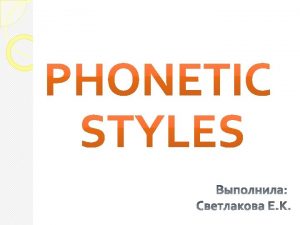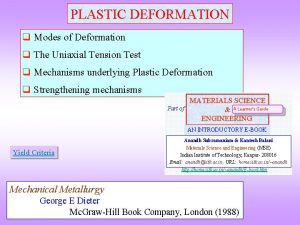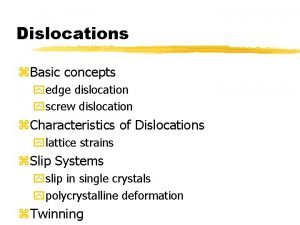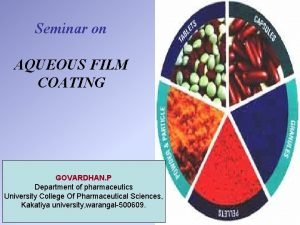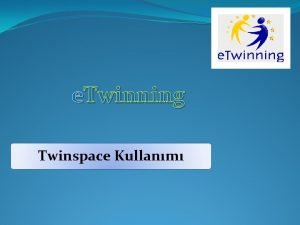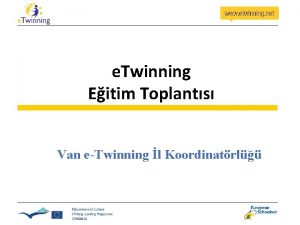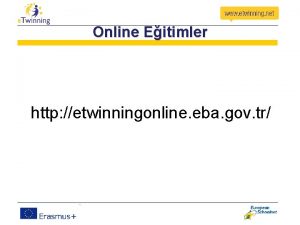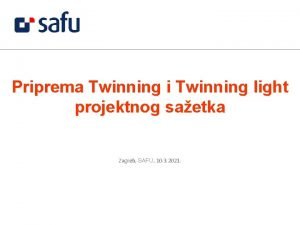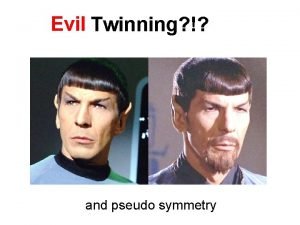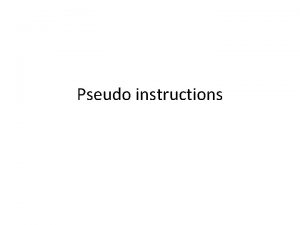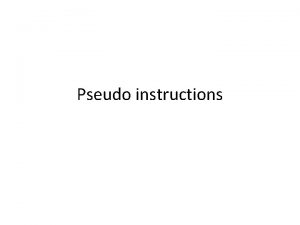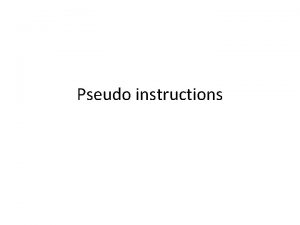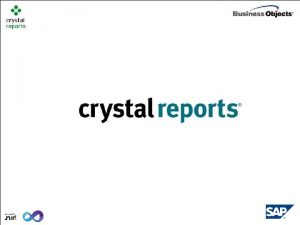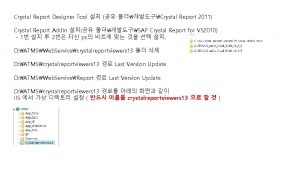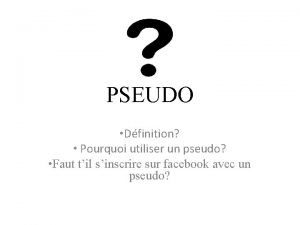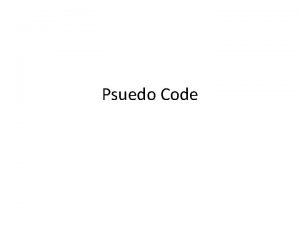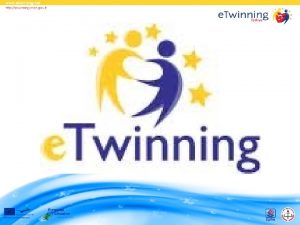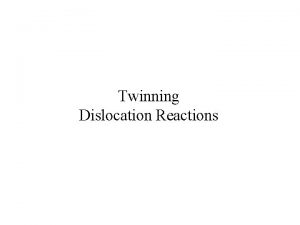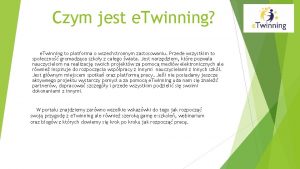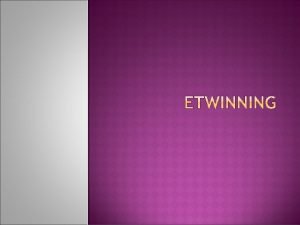Pseudo translation and Twinning Crystal peculiarities Pseudo translation

















- Slides: 17

Pseudo translation and Twinning

Crystal peculiarities • Pseudo translation • Twin • Order-disorder

Pseudo translation Real space a b Reciprocal space Distance between spots: 1/a, 1/b Distance between spots: 1/(2 a), 1/b Every second reflection is weak.

Pseudo-translation Cell P 0 Patterson 0. 125 P 0 Pst-vector

Pseudo translation (PST) may cause problems in molecular replacement. Refinement usually does not have much problem. However in the presence of PST the solution may be in wrong origin. There may be other sources of pseudotranslation: 1) Non-merohedral twin 2) Helices, DNA 3) Order-disorder

Twinning

merohedral and pseudo-merohedral twinning Crystal symmetry: Constrain: Lattice symmetry *: (rotations only) Possible twinning: P 3 P 622 P 2 β = 90º P 222 P 2 merohedral pseudo-merohedral - Domain 1 Twinning operator Domain 2 Crystal lattice is invariant with respect to twinning operator. The crystal is NOT invariant with respect to twinning operator. -

More than three layers, but less than the whole crystal. C 2 single crystal C 2221 OD-twin Allotwin C 2 C 2221 Disordered OD-structure

The whole crystal: twin or polysynthetic twin? A single crystal can be cut of the twin: twin polysynthetic twin yes no The shape of the crystal suggested that we dealt with polysynthetic OD-twin

Twins: Self-Rotation Function Figures show sections of the selfrotation function corresponding to two-fold axes Experimental data Crystallographic two-fold axis • PDB code 1 l 2 h • Spacegroup P 43 • 1 molecule per AU • Merohedral twinning Four equivalent twinning two-fold axes • PDB code 1 igj • Spacegroup P 21 • NCS (Pseudosymmetry): 2 monomers per AU • Pseudo-merohedral twinning Model (single domain) Pseudosymmetry and twinning Crystallographic two-fold axis Pseudosymmetry

Rv. R-plot non-twins A: B: C, C’: translational NCS mislabeling F I mislabeling I F Red: (potential) merohedral twins Black: (potential) pseudomerohedral twins

Symmetry environment of twinning Merohedral twinning: – crystal symmetry assumes more symmetric lattice – twinning would not require extra constraints on unit cell dimensions Conclusions: – Cases with pseudosymmetry are more frequent in general, and dominate for pseudomerohedral twins. – Among solved structures, pseudomerohedral twinning is less frequent than merohedral. It is likely, that this is partially because of the problems with diagnostic.

Perfect twinning test This test is implemented in TRUNCATE Untwinned + pseudosymmetry: test shows no twinning Twin + pseudosymmetry: Test shows only partial Twinning. (decrease of contrast)

Partial twinning test Non-linearity No pseudosymmetry: linear for both twins and non-twins. Tilt shows twinning fraction. The test is useless for perfect twins (cannot distinguish it from higher symmetry) Pseudosymmetry causes non-linearity. Experimental errors + this non-linearity makes the test hardly interpretable in some cases. This test is implemented in SFCHECK

Electron density: 1 rxf We will see occasionally this “refmac” map “twin” map

Electron density: 1 jrg More usual and boring case “refmac” map “twin” map

Effect of twin on electron density: Noise level. Very, very approximate Ft - twinned structure factor FR - structure factor from “correct” crystal FW - structure factor from “wrong” crystal The first term is correct electron density the second term corresponds to noise. When twin and NCS are parallel then the second term is even smaller.
 Phonostylistics as a branch of phonetics
Phonostylistics as a branch of phonetics Difference between slip and twinning
Difference between slip and twinning Screw dislocation animation
Screw dislocation animation Etwinning twin spaces
Etwinning twin spaces Twinning space
Twinning space Twinning tablet defects
Twinning tablet defects Etwinning live registration
Etwinning live registration Twinning twinspace
Twinning twinspace Etwinning nedir
Etwinning nedir Twinning ne demek
Twinning ne demek Twinspace etwinning net
Twinspace etwinning net E twinning eba online
E twinning eba online I twinning
I twinning Fridge twinning
Fridge twinning Pseudo twin
Pseudo twin E twinning
E twinning Sematic translation
Sematic translation Linear function transformations
Linear function transformations
